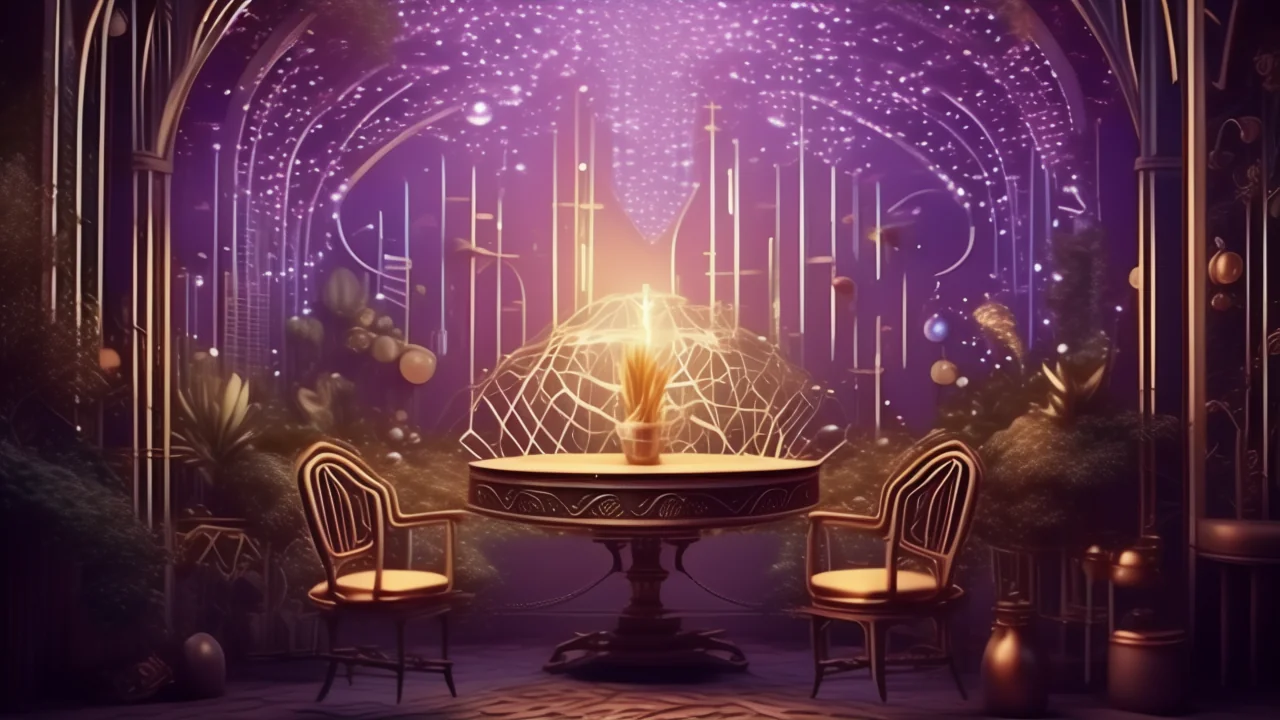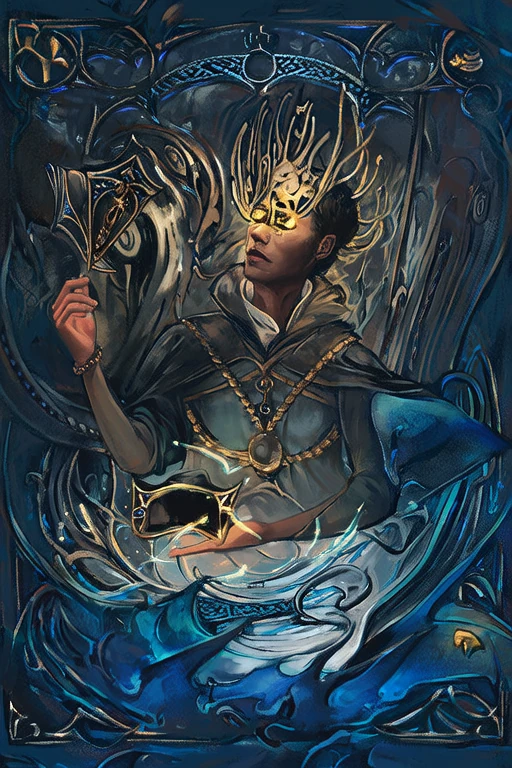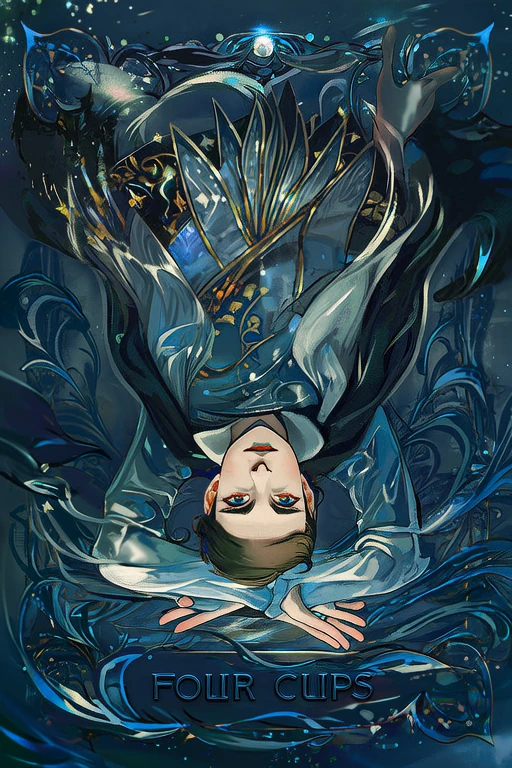
Three of Cups
Discover the deep meaning of Three of Cups with our free AI-powered tarot interpretation. Get instant, accurate readings based on advanced tarot knowledge.

Keywords
Upright Meaning
Friendship, creativity, collaborations
Reversed Meaning
Overindulgence, gossip, isolation
Full Interpretation
The Three of Cups represents friendship, creativity, and joyful collaborations.
In-Depth Analysis
📜 Historical Background
The **Three of Cups** is one of the 56 minor arcana cards in the tarot deck, specifically belonging to the suit of Cups, which corresponds to the element of Water and is traditionally associated with emotions, intuition, and relationships. Its origins trace back to early 15th-century Europe, where tarot cards were first used not for divination, but for playing card games such as Tarocchi in Italy and Tarot in France. The earliest known depictions of the Three of Cups appear in the **Visconti-Sforza Tarot**, a 15th-century hand-painted deck commissioned by the ruling families of Milan. In this deck, the card illustrated three women joyfully raising their cups in a gesture of togetherness, symbolizing celebration, friendship, and communal harmony.
Over time, as tarot evolved from a game into a tool for esoteric and mystical practices in the 18th and 19th centuries, the meaning of the Three of Cups deepened. The **Rider-Waite-Smith Tarot**, created by A.E. Waite and illustrated by Pamela Colman Smith in 1909, became the most influential tarot deck in modern times. In this version, the Three of Cups depicts three women holding cups aloft in a circular motion, often interpreted as a dance of unity and shared joy. Surrounding them are three additional cups on the ground, suggesting that while celebration is abundant, not all opportunities may be seized.
Throughout history, the Three of Cups has been associated with themes of **friendship, community, and emotional fulfillment**. In some interpretations, it has been linked to mythological figures such as the **Three Graces** (Aglaea, Euphrosyne, and Thalia) from Greek mythology, goddesses of charm, beauty, and mirth. These deities were often depicted dancing in a circle, much like the figures in the Rider-Waite-Smith version of the card, reinforcing the symbolism of harmony and shared joy.
Different tarot decks interpret the Three of Cups in varied ways. For example, the **Thoth Tarot** by Aleister Crowley and Lady Frieda Harris names the card “Abundance” and associates it with the astrological sign of **Jupiter in Cancer**, highlighting emotional generosity and nurturing energy. Meanwhile, the **Marseille Tarot**, one of the oldest surviving tarot styles, typically shows three simple cups on a table without human figures, emphasizing the material or emotional wealth aspect.
Culturally, the Three of Cups has been seen as a harbinger of positive social connections across various traditions. In some Eastern European interpretations, it symbolizes the coming together of family and the celebration of shared heritage. In modern Wiccan and pagan practices, it is often used in spells related to friendship, emotional healing, and group rituals. The card’s evolution from a simple game piece to a symbol of emotional abundance reflects its enduring relevance in both historical and contemporary contexts.
Symbolism & Imagery
The **Three of Cups** is rich in symbolism, with each element in its imagery contributing to a deeper understanding of its meaning. In the **Rider-Waite-Smith** version, three women are shown joyfully raising their cups in a circular formation, symbolizing unity, celebration, and shared emotional fulfillment. Their postures and expressions suggest a sense of harmony and mutual support, emphasizing the importance of community and friendship. Behind them lie three additional cups resting on the ground, often interpreted as missed opportunities or unclaimed blessings, reminding the seeker that while joy and abundance are present, not all possibilities may be realized at once.
Color symbolism plays a crucial role in interpreting the card. The **green dresses** worn by the women symbolize growth, fertility, and emotional healing, while the **white undergarments** suggest purity and sincerity in relationships. The **blue sky** in the background represents emotional clarity and peace, reinforcing the card’s positive connotations. The **cups themselves**, typically depicted as ornate chalices, are associated with the element of Water, which governs emotions, intuition, and the subconscious mind.
Numerologically, the number **three** holds deep significance. It represents creativity, communication, and the trinity of mind, body, and spirit. In many spiritual traditions, three symbolizes completeness and the power of manifestation. In the context of the Three of Cups, this number emphasizes the importance of emotional balance and the joy that comes from shared experiences.
Across different cultures and tarot traditions, the Three of Cups can be interpreted in various ways. In **Western esoteric traditions**, it is often seen as a card of emotional abundance and reconciliation, particularly in relationships. In **Wiccan and pagan practices**, it is associated with rituals of friendship and emotional healing. Some **Eastern interpretations** view the card as a symbol of familial harmony and ancestral blessings, particularly in cultures where collective well-being is highly valued.
When the Three of Cups appears upright in a reading, it typically signifies **joy, friendship, and emotional fulfillment**. It may indicate a time of celebration, the formation of new friendships, or the resolution of past conflicts. However, when reversed, the card can suggest **emotional imbalance, superficial connections, or unmet expectations** in relationships. It may serve as a reminder to evaluate the authenticity of one’s social connections or to be cautious of overindulgence in emotional matters.
The Three of Cups is closely connected to other cards in the tarot deck. It resonates strongly with the **Two of Cups**, which represents the beginning of a meaningful emotional connection, and the **Four of Cups**, which suggests emotional apathy or missed opportunities. It also aligns with the **Six of Cups**, which evokes nostalgia and childhood memories, and the **Ten of Cups**, symbolizing ultimate emotional fulfillment and family harmony. Together, these cards form a narrative of emotional growth, from forming connections to achieving lasting happiness.
Psychological Insights
From a **psychological perspective**, the **Three of Cups** can be interpreted through the lens of Carl Jung’s archetypes and the collective unconscious. The card embodies the archetype of the **Tribe or Community**, representing the innate human need for connection, belonging, and shared emotional experiences. Jung emphasized the importance of interpersonal relationships in achieving individuation—the process of integrating the self. The Three of Cups reflects this journey by highlighting the value of meaningful friendships, emotional support systems, and communal bonds in personal growth.
In modern life, the Three of Cups serves as a powerful reminder of the importance of **emotional intelligence and social harmony**. It encourages individuals to seek out supportive relationships, celebrate shared successes, and engage in activities that foster emotional well-being. Whether in personal relationships, professional environments, or community settings, the card underscores the benefits of collaboration, empathy, and mutual respect.
For **personal growth and self-awareness**, the Three of Cups invites individuals to reflect on the quality of their relationships and the emotional fulfillment they derive from them. It may suggest a time to reconnect with old friends, join a supportive group, or engage in creative or social endeavors that bring joy and emotional satisfaction. The card encourages a deeper understanding of one’s emotional needs and the importance of nurturing healthy connections.
In **therapeutic and counseling contexts**, the Three of Cups can be a valuable tool for exploring interpersonal dynamics and emotional healing. It may indicate the need for improved communication, the resolution of past conflicts, or the importance of building a strong support network. Counselors and therapists might use the card to guide discussions about social integration, emotional resilience, and the impact of relationships on mental health.
In **modern spiritual practices**, the Three of Cups is often used in rituals related to friendship, emotional healing, and group manifestation. Wiccans and pagans may incorporate the card into spells or meditations aimed at strengthening bonds between loved ones or fostering a sense of unity within a community. It is also associated with **celebratory rites and seasonal festivals**, symbolizing the joy of gathering with others and honoring shared experiences. As a symbol of emotional abundance and connection, the Three of Cups continues to hold deep significance in both psychological and spiritual contexts.
Correspondences
The **Three of Cups** is associated with the **astrological sign of Cancer**, ruled by the **Moon**, which governs emotions, intuition, and the subconscious mind. This planetary influence enhances the card’s themes of emotional connection, nurturing energy, and sensitivity. The Moon’s connection to the tides also reinforces the idea of emotional ebb and flow, reminding the seeker to remain attuned to their inner world and the feelings of those around them.
In terms of **gemstones and crystals**, the Three of Cups resonates with stones that promote emotional healing and harmony, such as **moonstone**, **rose quartz**, and **amazonite**. Moonstone enhances intuition and emotional balance, rose quartz encourages love and compassion, and amazonite supports communication and emotional clarity. These stones can be used in meditation or carried as talismans to amplify the card’s energies.
**Herbs and essential oils** linked to the Three of Cups include **lavender**, **chamomile**, and **ylang-ylang**, all of which promote relaxation, emotional healing, and social harmony. Burning lavender or chamomile incense during a tarot reading can create a calming atmosphere conducive to reflection and emotional connection.
The card is associated with the **element of Water**, symbolizing emotions, intuition, and the subconscious. It aligns with the **season of autumn**, a time of harvest and reflection, and is often linked to **evening hours**, when emotions are more introspective. The Three of Cups also connects with the **heart chakra (Anahata)**, governing love, compassion, and emotional balance. Meditating on this card while visualizing green or pink light can help open and align the heart chakra.
Numerologically, the number **three** is linked to creativity, communication, and emotional expression. In the context of the Three of Cups, it emphasizes the importance of emotional openness, shared experiences, and the manifestation of joy through meaningful connections.
❓ Frequently Asked Questions
### **Frequently Asked Questions About the Three of Cups**
**1. What does the Three of Cups mean in a love reading?** In a love reading, the Three of Cups typically signifies **emotional harmony, friendship, and shared joy**. If you're single, it may indicate the arrival of a new friendship or romantic connection that brings happiness. If you're in a relationship, it suggests a time of celebration and deep emotional bonding. However, in reversed positions, it may warn against superficial connections or emotional distractions.
**2. Can the Three of Cups indicate a reunion or reconciliation?** Yes, the Three of Cups is often seen as a **positive omen for reconciliation**, especially in friendships or emotional matters. It may indicate the resolution of past conflicts and the restoration of harmony in relationships.
**3. Is the Three of Cups a good card in a career reading?** In a career context, the Three of Cups can signify **teamwork, collaboration, and workplace harmony**. It may suggest that success will come through partnerships or group efforts. However, it can also caution against overcommitting or getting caught up in office politics.
**4. What is a common misconception about the Three of Cups?** Many beginners assume the Three of Cups always means happiness and celebration. While this is true in many cases, the card can also serve as a reminder to evaluate the **authenticity of your relationships** or to be cautious of emotional overindulgence.
### **Reading Techniques and Interpretation Tips**
**1. Best Spreads for the Three of Cups** The Three of Cups works well in **three-card spreads** focusing on past, present, and future or in **relationship-focused layouts**. It also complements cards like the Two of Cups, Six of Cups, and Ten of Cups to highlight themes of emotional connection and shared joy.
**2. How to Read the Three of Cups in a Group Reading** In group or community readings, the Three of Cups often indicates **collective harmony, celebration, or emotional healing**. It may suggest the need for teamwork, the formation of a new alliance, or a shared emotional experience.
**3. Interpreting the Three of Cups with Major Arcana** When paired with Major Arcana cards like the **Lovers** or **The Star**, the Three of Cups reinforces themes of love, emotional fulfillment, and spiritual alignment. With **The Devil**, it may warn against emotional dependencies or superficial relationships.
**4. Practical Advice for Interpreting the Three of Cups** Consider the seeker’s emotional state and social environment when interpreting this card. Ask questions like: Are they seeking deeper connections? Is there a need for celebration or healing? The Three of Cups invites reflection on the **quality of relationships** and the emotional nourishment they provide.
Practical Readings
Love Reading – Free • Online • AI • Instant • Accurate
In love, Three of Cups upright: Friendship, creativity, collaborations. Reversed: Overindulgence, gossip, isolation.
Career Reading – Free • Online • AI • Instant • Accurate
For career, Three of Cups upright: Friendship, creativity, collaborations. Reversed: Overindulgence, gossip, isolation.
Yes‑No Reading – Free • Online • AI • Instant • Accurate
As a quick yes‑no: upright tends toward “yes”, reversed leans “no”—interpret within your question’s context.
FAQ
What does Three of Cups mean in tarot?
Three of Cups represents friendship, creativity, collaborations. This card encourages The Three of Cups represents friendship, creativity, and joyful collaborations.
What is Three of Cups reversed meaning?
When Three of Cups appears reversed, it signifies overindulgence, gossip, isolation. Consider areas that may require adjustment or release.
Is Three of Cups a positive card?
Three of Cups is generally considered a neutral to positive card, representing friendship, creativity, collaborations.
What should I do if I draw Three of Cups?
If you draw Three of Cups, focus on friendship, creativity, collaborations. Align actions with the card’s upright energy.
How do I interpret Three of Cups in a love reading?
In love readings, Three of Cups suggests friendship, creativity, collaborations in relationships. Consider how friendship and creativity apply to your situation.
What does Three of Cups mean in a love reading?
In love, Three of Cups points to friendship, creativity, collaborations when upright and overindulgence, gossip, isolation reversed. Reflect on relational balance & authenticity.
How is Three of Cups interpreted in career?
For career, Three of Cups upright highlights friendship, creativity, collaborations while reversed warns of overindulgence, gossip, isolation—adjust planning & execution.
What is the financial meaning of Three of Cups?
Financially, Three of Cups suggests friendship, creativity, collaborations potential; reversed indicates overindulgence, gossip, isolation—use prudent pacing.
Is Three of Cups a yes or no card?
Three of Cups is generally a context-dependent when upright; reversed leans toward hesitation or NO—apply to the nuance of your question.
References
References
- Encyclopaedia Britannica – Tarot
Historical overview and cultural context of tarot cards.
- Wikipedia – Tarot
General reference on tarot history, structure, and usage.
- Biddy Tarot – Tarot Card Meanings
Widely cited interpretations and learning resources.
- Labyrinthos – Tarot Card Meanings
Educational articles on major and minor arcana.



